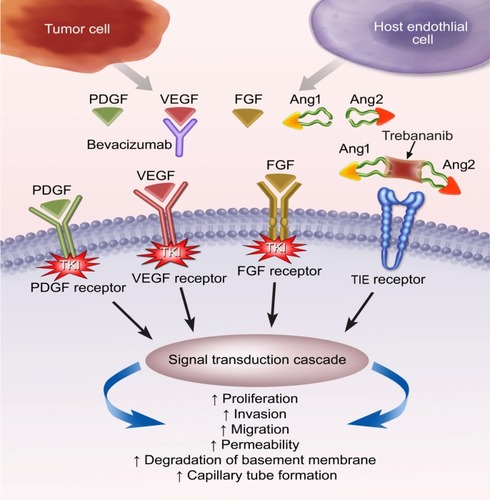Figures & data
Figure 1 Inhibition of angiogenic pathways: targeting multiple angiogenic ligands and cell membrane receptors.
Abbreviations: PDGF, platelet derived growth factor; VEGF, vascular endothelial growth factor; FGF, fibroblast growth factor; Ang1, angiopoietin-1; Ang2, angiopoietin-2; TIE, tyrosine kinase with immunoglobulin-like and EGF-like domains 1; TKI, tyrosine kinase inhibitors.

Table 1 Completed Phase I trials of pazopanib in solid tumors, including epithelial ovarian cancer
Table 2 Completed Phase II/III trials of pazopanib in epithelial ovarian carcinoma
Table 3 Pazopanib and epithelial ovarian carcinoma: clinical trials actively recruiting patients
